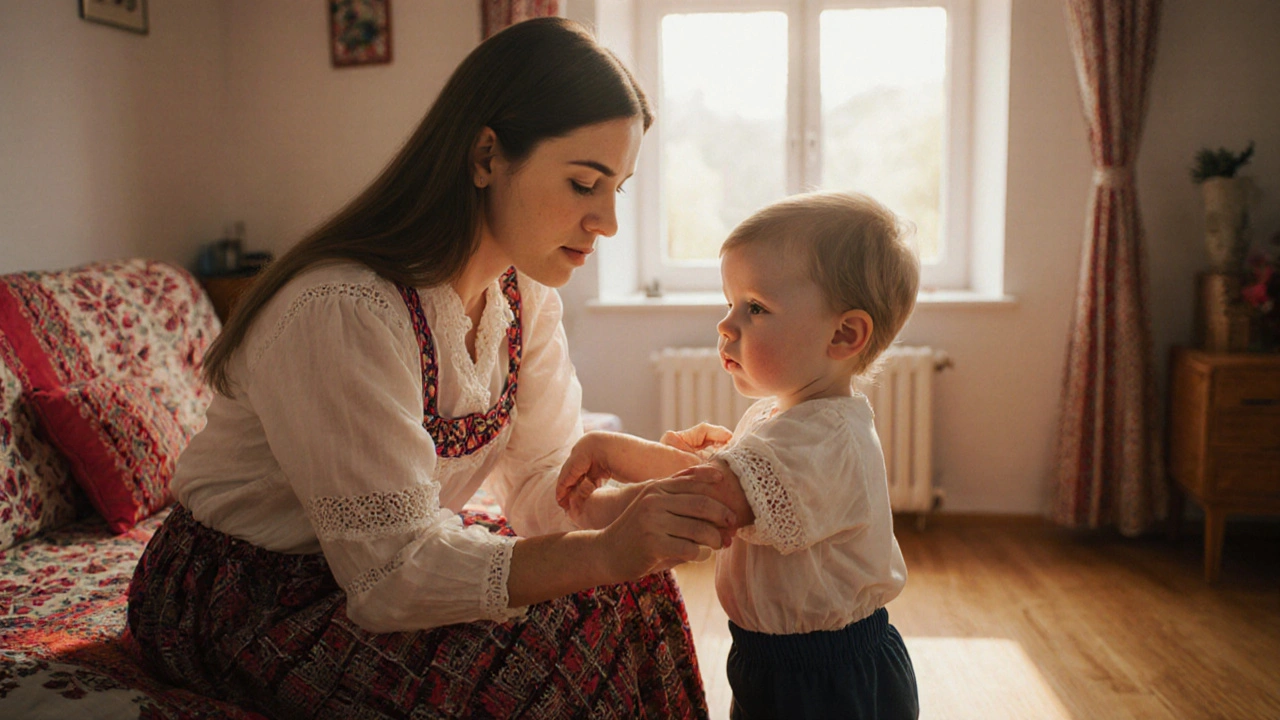
When we talk about parvovirus B19, malý DNA virus, který napadá červené krvinky a způsobuje typické dětské infekce. Also known as pátá nemoc, it primarily spreads through respiratory droplets and direct contact. The virus is especially relevant for parents because it can appear as a harmless rash or develop into serious complications. Understanding how parvovirus B19 behaves helps you react quickly and avoid unnecessary worry.
One of the most recognizable outcomes of this infection is erythema infectiosum, často označovaná jako „slapped‑cheek“ syndrom, která se projevuje jasně červenými tvářemi a následnou tělovou vyrážkou. This rash is a clear sign that the virus has taken hold, and it typically appears after a mild fever. The disease encompasses both dermatological and hematological aspects, meaning that a simple skin change can signal deeper blood‑cell involvement. Diagnosis usually requires a simple blood test to detect specific IgM antibodies, which confirms recent infection. Parents often wonder when to call the doctor; the rule of thumb is: if the rash spreads rapidly, the child feels unusually tired, or there are signs of anemia, seek medical advice promptly.
Beyond the classic rash, aplastic crisis, náhlý pokles červených krvinek, která může vést k těžké anémii, je vážnou komplikací, zejména u dětí s podřadnou hemoglobinopatií is a critical scenario that demands urgent care. In otherwise healthy kids the virus usually resolves on its own, but for those with sickle‑cell disease or thalassemia, the infection can trigger a life‑threatening drop in hemoglobin. Another frequent, though less severe, manifestation is arthralgia, kloubní bolesti, které se častěji objevují u dospělých a adolescentů. These joint pains often mimic rheumatic diseases, leading to confusion without proper testing. Recognizing that parvovirus B19 can affect both blood and joints helps doctors choose the right labs and avoid unnecessary antibiotics.
Prevention focuses on basic hygiene because, unfortunately, no vaccine exists yet. Regular hand‑washing, covering the mouth when coughing, and keeping sick children home until the fever subsides are the most effective steps. Pregnant women should be especially cautious; maternal infection can cause fetal anemia or hydrops fetalis, so early testing is advised if exposure is suspected. While the virus is highly contagious, it is less stable on surfaces, so routine cleaning of toys and shared items reduces the risk. Parents often ask whether other vaccinations protect against this virus – the answer is no, but staying up‑to‑date with routine immunizations prevents co‑infections that could worsen the clinical picture.
Below you will find a curated list of practical guides that dive deeper into related topics: how to spot a fever in children, when a rash warrants a doctor’s visit, and what to do if your child experiences joint pain after a viral infection. Each article offers clear steps, symptom checklists, and advice on when to seek professional help. With this overview, you’ll be better equipped to recognize the signs of parvovirus B19 and manage its effects confidently.